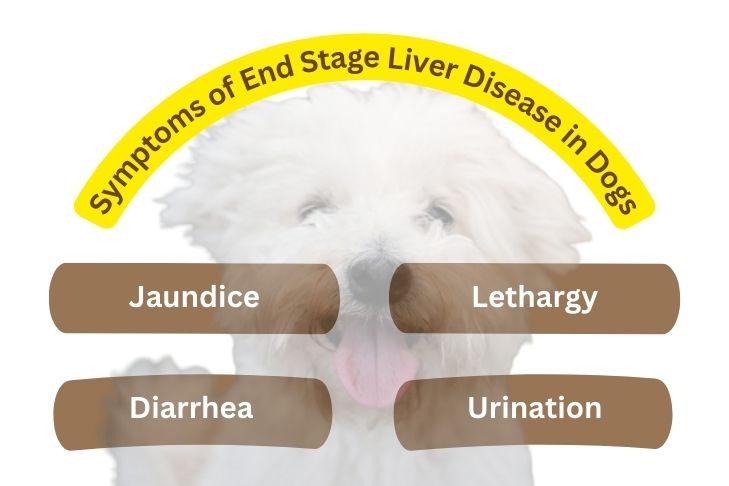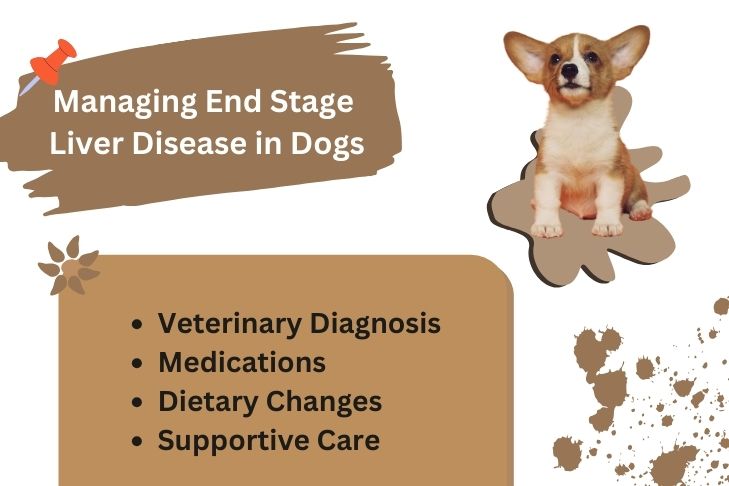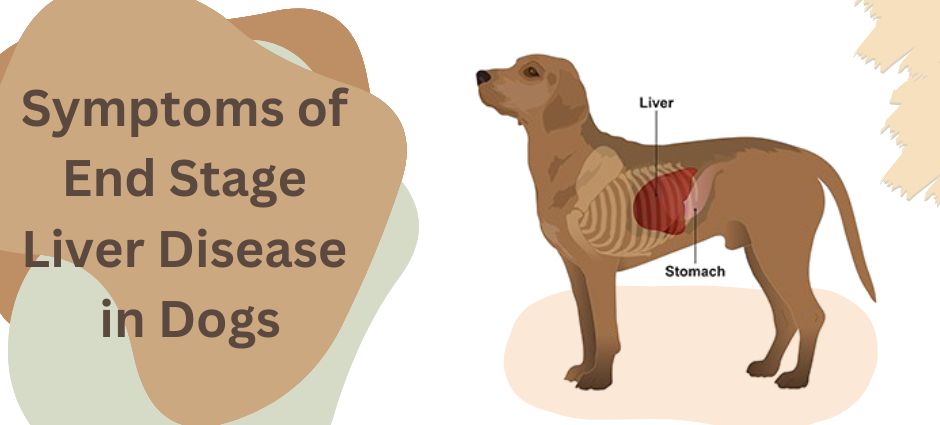It goes without saying that if you have a dog, its health is always your first priority. One of the most concerning conditions that can affect our dogs is liver disease, particularly when it reaches its end stage.
Understanding the symptoms of end stage liver disease in dogs can help us recognize the signs early and seek appropriate veterinary care to ensure our pets are as comfortable as possible during this challenging time.
So, let’s check this out!
What is End Stage Liver Disease in Dogs?

End stage liver disease, also known as chronic liver failure, occurs when a dog’s liver is no longer able to perform its essential functions.
The liver is a vital organ responsible for numerous critical tasks, including detoxification, protein synthesis, and the production of biochemicals necessary for digestion.
So, when the liver is compromised to the point of failure, it can no longer support these functions, leading to severe health issues.
Also Learn About: Glossitis in Dogs
8 Common Symptoms of End Stage Liver Disease in Dogs

Recognizing the symptoms of end stage liver disease in dogs can be challenging, as they often overlap with other health conditions. However, there are specific signs that can indicate the progression of this serious illness:
1. Jaundice:
One of the most noticeable symptoms of end stage liver disease in dogs is jaundice, which is characterized by a yellowing of the skin, gums, and whites of the eyes. This occurs because the liver is unable to process bilirubin, a byproduct of red blood cell breakdown, causing it to accumulate in the body.
2. Loss of Appetite:
Dogs with end stage liver disease often experience a significant loss of appetite. This can lead to rapid weight loss and malnutrition, further exacerbating their health condition.
3. Lethargy and Weakness:
As the liver fails, toxins build up in the body, leading to lethargy and weakness. Your big white dog may seem unusually tired, unwilling to play, and may have difficulty performing even simple activities.
4. Vomiting and Diarrhea:
Gastrointestinal symptoms such as vomiting and diarrhea are common in chunky dogs with end stage liver disease. These symptoms can be particularly severe and may lead to dehydration, requiring immediate veterinary attention.
5. Increased Thirst and Urination:
Polydipsia (increased thirst) and polyuria (increased urination) are also common in dogs with liver disease. These symptoms occur because the liver’s inability to function properly disrupts the body’s fluid balance.
6. Behavioral Changes:
Cognitive and behavioral changes can also be a sign of end stage liver disease in dogs. These can include disorientation, aimless wandering, confusion, and even aggression.
7. Swollen Abdomen:
Ascites, or the accumulation of fluid in the abdomen, can cause a noticeable swelling in dogs with advanced liver disease. This condition is uncomfortable and can interfere with normal breathing and movement.
8. Bleeding Disorders:
The liver plays a crucial role in blood clotting. When it fails, dogs may develop bleeding disorders, leading to unexplained bruising, nosebleeds, and prolonged bleeding from minor cuts.
How to Manage End Stage Liver Disease in Dogs

If you suspect finding symptoms of end stage liver disease in dogs, it is crucial to seek veterinary care immediately. It’s always better to get the diagnosis at the earliest so the dog’s quality of life can be improved. Here is a list of things you can do:
- Veterinary Diagnosis A veterinarian will perform a thorough examination, including blood tests, ultrasounds, and possibly a liver biopsy, to confirm the diagnosis and determine the severity of the disease.
- Medications Various medications can be prescribed to manage symptoms and slow the progression of liver disease. These may include antibiotics to prevent infections, anti-nausea drugs, and medications like aspirins to control fluid retention in your chunky dog.
- Dietary Changes A special diet low in protein and high in easily digestible carbohydrates can reduce the workload on the liver. Your veterinarian may recommend specific therapeutic diets designed for dogs with liver disease.
- Supportive Care Ensuring your dog stays hydrated and comfortable is essential. This may involve administering fluids, providing a calm and stress-free environment, and monitoring their overall well-being closely.
- Regular Monitoring Regular veterinary check-ups are critical to monitor the progression of the disease and adjust treatment plans as needed. Keeping a close eye on your dog’s symptoms and reporting any changes to your vet can make a significant difference.
Providing Comfort and Love
While the prognosis for end stage liver disease in dogs is often poor, there are ways to ensure your pet’s remaining time is as comfortable and loving as possible. Providing a peaceful environment, maintaining a consistent routine, and showering your dog with affection can help ease their journey.
Understanding the symptoms of end stage liver disease in dogs can empower you to take proactive steps toward managing their health.




